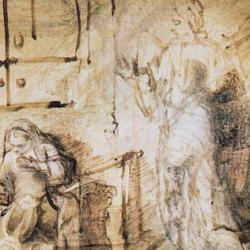Unpacking her patrilineal account of sacrifice, Nancy Jay notes offhandedly that the genealogy of Genesis 4-5 is “perfectly patrilineal. No women are named; wives are not even mentioned” (Throughout Your Generations Forever, 96).
It’s true. Women are pretty much invisible after Eve is named “Living one” and bears sons in 4:1-2. She bears again in 4:25-267, but is unnamed.
But there’s a pattern that Jay doesn’t notice, two patterns. The first has to do with the important difference in the presence of women in the genealogies of Cain and Seth. Cain’s line rapidly moves through several generations to Lamech, no women mentioned. The first women in the line are Lamech’s wives, the first two named wives after Even, Adah and Zillah (4:19). The line of Seth, though, has women in every generation, as each of Seth’s descendants fathers “sons and daughters” (5:10, 13, 16, 19, 22). The first time we hear of “daughters” from the line of Cain, they are intermarrying with the “sons of God” and giving birth to brutal Nephilim (5:1-4). The line of Seth is far more feminized than the line of Cain. After the flood, Shem’s line is the same (11:11, 13, 15; etc.).
Second, the next wife named after Lamech’s is Abram’s wife, Sarai, and Milcah, the wife of Abram’s brother Nahor (11:29-30). Sarai of course becomes a major character in the Abraham narratives, and the entire plot-line turns on her pregnancy: It’s not enough for Abraham to have a son, the son of the covenant must come from Abraham and Sarah. In the next generation, Rebekah is a more important figure than her husband, and much of the drama of Jacob’s life is about the tension between his sister-wives, Leah and Rachel.
So, yes, Jay is right: Those early genealogies are masculine, but the story eventually yields to something else – not feminism or egalitarianism, but not patriarchalism either.















